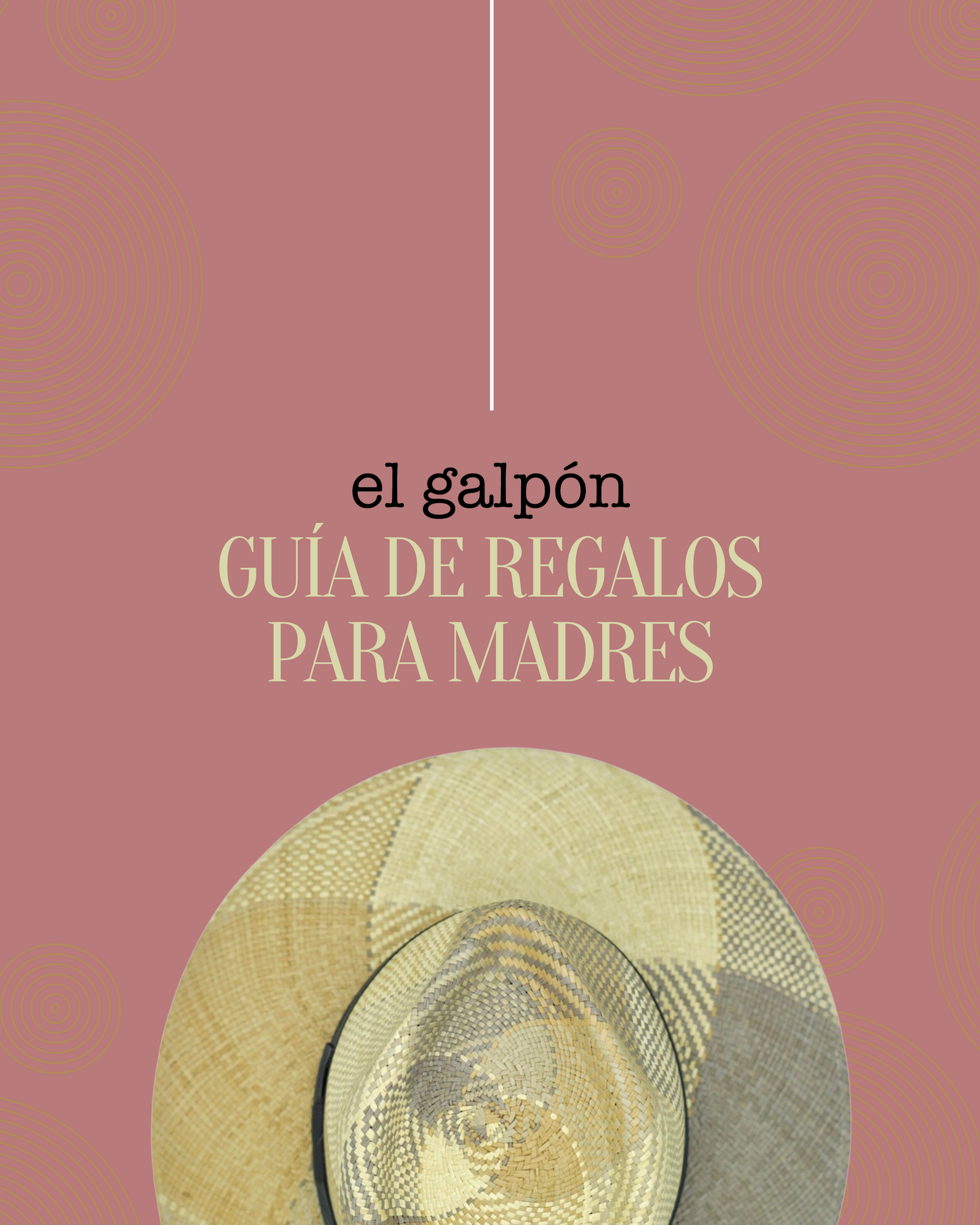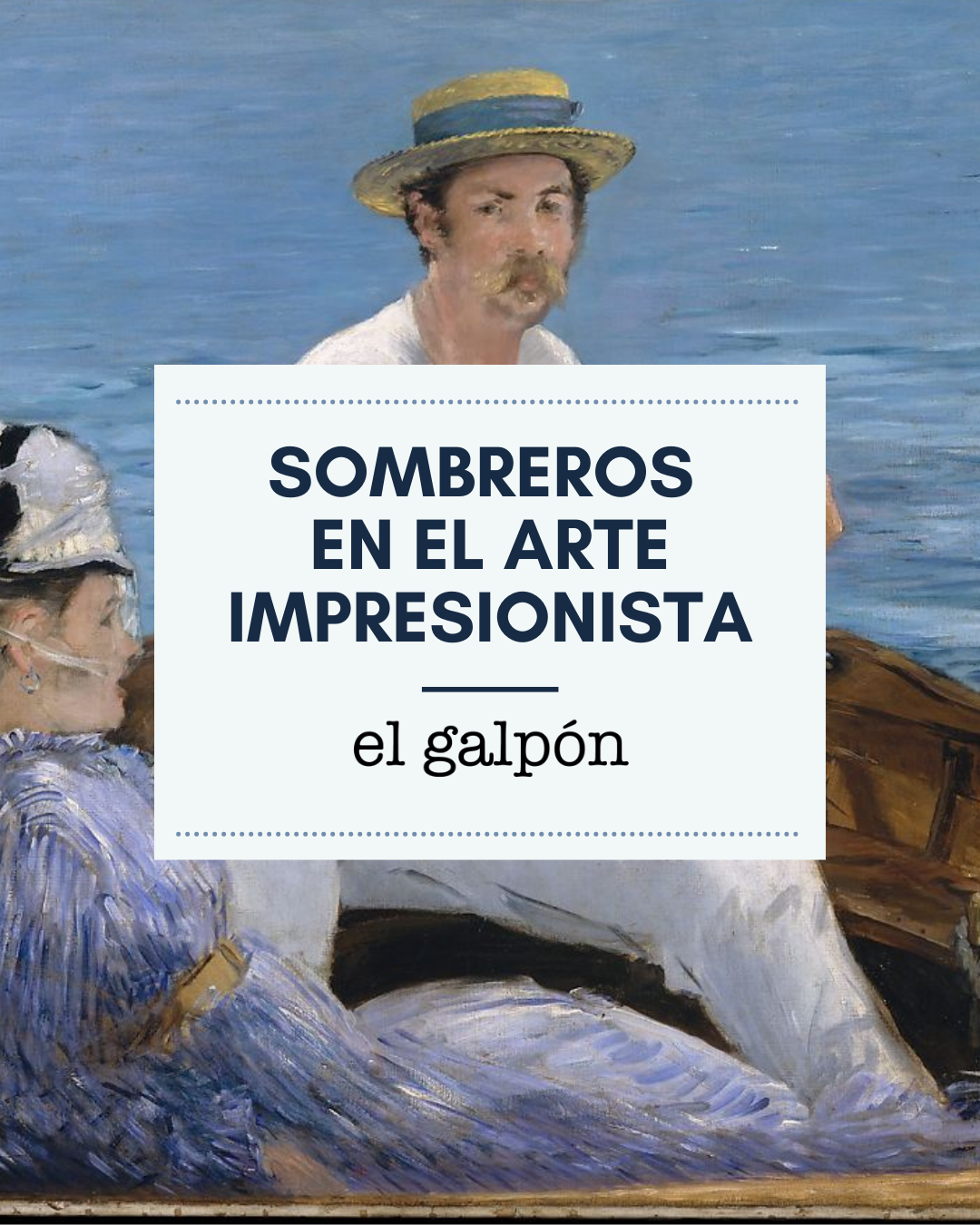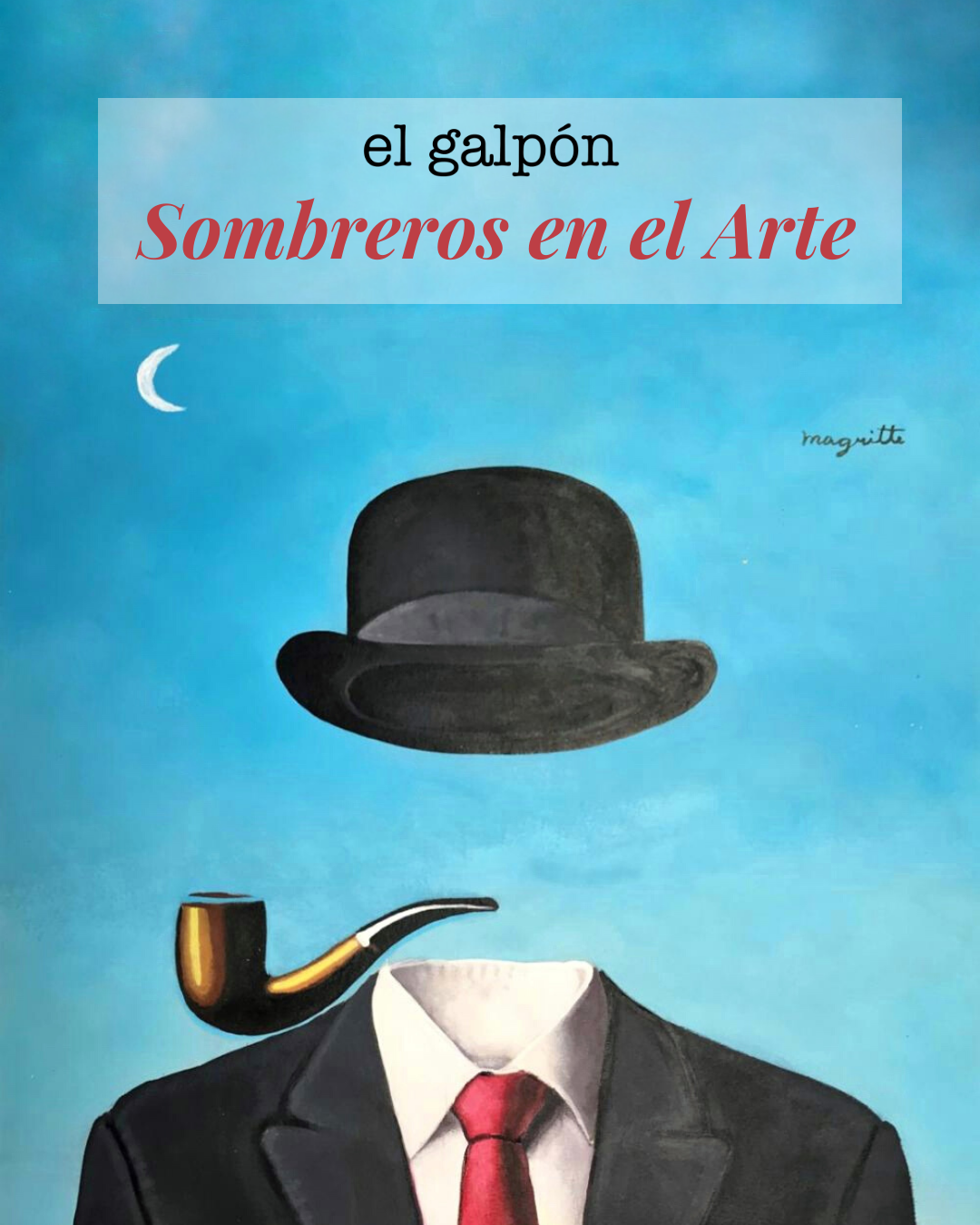Si algo caracterizo al Impresionismo además de las pinceladas rápidas y la captación de la luz, es la representación de la vida moderna en Paris en el siglo XIX. Estos pintores tenían la predilección por las escenas espontáneas en cafés, el teatro y la ópera, el circo, el hipódromo y el ocio al aire libre. Todas estas actividades para los artistas estaban estrechamente relacionadas con el mundo de la moda y los sombreros fueron grandes protagonistas. Junto con la vestimenta, los sombreros, participaron en la construcción de la imagen de una sociedad parisina que vivía una etapa de grandes cambios políticos, avances tecnológicos e ideas filosóficas.
Aquí te estaremos mostrando alguno de los sombreros mas famosos e impresionantes en este estilo de Arte y como bono te incluimos algunos estilos que estan disponibles en El Galpón.
Inicialmente, en el caso de los sombreros, para poder comprarlos era necesario encargarlos antes. Pero a mediados del siglo aparecieron las máquinas de coser transformando la industria del sombrero convirtiéndolo en un accesorio masivo. Esto lo podemos apreciar en Chez le modiste (1882) de Edgar Degas, la primera obra de una serie de pasteles dedicados a las sombrererías de Paris. La pintura es protagonizada por las jóvenes burguesas de Paris probándose sombreros de seda, plumas, paja y raso con adornos azules, rojos y blancos. Hoy día este estilo de sombrero le llamamos Pamelas. Las podemos ver en diferentes colores, con diferentes cintas y diferentes adornos.
Cómo por ejemplo en las tres versiones de Chez le modiste (1882)
Pamelas
El Galpón
Lo más habitual para los parisinos era llevar un sombrero junto a su atuendo de día. No solo Degas se interesó por las telas y los accesorios. Artistas como Manet, y Toulouse Lautrec se esmeraron por recrearlos en sus obras con gran detalle como signo del consumo de la modernidad.
Spring Edouard Manet
Toulouse-Lautrec
Actualmente durante la época de primavera y verano los sombreros son llevados con diferentes tocados y diseños que los complementan. En el Galpón tenemos estas opciones disponibles.
En el Arte Impresionista otro de los sombreros mas presentes fue el Boater, hoy día conocido como el Pra Pra. Este estilo de sombrero fue utilizado tanto por hombres como mujeres. En el arte vemos el estilo boater presentado en múltiples ocasiones en los días de verano en el mar o largos paseos relajantes. Actualmente el sombrero Pra Pra siguen siendo llevado en lugares tropicales y momentos de paseo y aventura.
Gustave Caillebotte "El Bal du Moulin de la Galette"
Boating, Edouard Manet
Estilo Pra Pra disponible en El Galpón
Por otro lado las pinturas de Berthe Morisot o la propia Cassatt han sido un ejemplar de la mujer moderna. Young Woman with a Straw Hat (1884) de Morisot y Young Woman in a Black and Green Bonnet (1890) de Cassatt, reflejan la tendencia de usar los sombreros más altos con ornamentos más sobrios. La propia Morisot también fue representada en Portrait of Berthe Morisot by Edouard Manet (1872) en la que la artista posa con un sombrero negro alto rodeado de un tul. Con una pose similar, mirando al espectador con un medio plano, Toulouse Lautrec retrato a la Suzanne Valadon, otra pintora francesa, in Portrait of Suzanne Valadon (1885). La mujer viste un sombrero alto negro con una pequeña decoración que lo rodea que también combina con el color de su vestido.
Berthe Morisot, Young Woman with a Straw Hat (1884)
Young Woman in a Black and Green Bonnet (1890) de Cassatt
Portrait of Berthe Morisot by Edouard Manet (1872)
Portrait of Suzanne Valadon (1885)
El sombrero que utilizaban estas mujeres era el Bonnet, el modelo más usado en los próximos años. Aquel nuevo estilo de sombrero se caracterizaba por ser alto, más aún en los looks de día, y era adornado con flores o tela. Si bien durante la primera mitad del siglo XIX los sombreros femeninos eran ostentosos decorados con flores, cintas, pieles y plumas; a finales del siglo aparecieron nuevos estilos. Las capelinas de ala ancha y los tocados, más pequeños, conquistaron las noches y el arte.
Elisabeth Louise Vigée
Por su lado, los sombreros masculinos seguían siendo muy sobrios. El modelo de moda era el sombrero de copa alta, también conocido como galera o chistera, con ala corta y copa recta. Pero a finales del siglo también se introdujo el bombín con ala corta y copa redondeada, otro modelo muy popular entre los hombres parisinos.
La moda masculina se puede evidenciar en obras como Oarsman in a Top Hat (1878) de Gustave Caillebotte. Esta pieza inmortaliza el nuevo estilo de la chistera. El artista retrata a un hombre, aparentemente de clase alta, navegando; una de las actividades de ocio favoritas del artista para sus pinturas. A pesar del calor de verano, el hombre decidió quitarse la chaqueta pero dejar su sombrero, reflejando la importancia de dicho accesorio y de la moda en general en aquella época.
Oarsman in a Top Hat (1878) de Gustave Caillebotte
La elegancia impregnaba todas las actividades como se puede apreciar en Le Déjeuner sur l'Herbe (1866) de Édouard Manet. Los retratados están en un picnic pero los hombres visten de traje, y uno de ellos un sombrero fez, usado generalmente en Turquía y al norte de África.
Le Déjeuner sur l'Herbe (1866) de Édouard Manet
A diferencia de los géneros académicos, en las pinturas impresionistas no hay temas religiosos, ni históricos. Las pinturas impresionistas representaban temas triviales sobre la vida urbana en Paris en la Bella Epoque. Pero no solo retratan las preferencias de los sombreros a medida que pasaba el tiempo, sino que también era un síntoma de una nueva sociedad. Con ello, surgió el ciudadano moderno, o el flaneur según el poeta Baudelaire, que vagueaba fascinado por cada rincón de la ciudad. La experiencia urbana y moderna marco un antes y un después y de igual manera lo pudimos notar en los sombreros.
Gustave Caillebotte. Calle de París, día lluvioso, 1877
¿Que te parece la representación de estos sombreros 'impresionista' hoy día?
Nuestros favoritos siguen siendo La Pamela, El Pra Pra y los que incluyen diferentes diseños y tocados. Aquí te dejamos el link de nuestra tienda para que le des un vistazo alguno de estos estilos.
https://elgalpon.net/collections/verano-summer
---
Hats in Impressionist art
If something characterized Impressionism in addition to the quick brushstrokes and the capture of light, it is the representation of modern life in Paris in the nineteenth century. These painters had a predilection for spontaneous scenes in cafes, the theater and opera, the circus, the racetrack, and outdoor leisure. All these activities for artists were closely related to the world of fashion and hats were great protagonists. Along with clothing, hats, they participated in the construction of the image of a Parisian society that was experiencing a period of great political changes, technological advances and philosophical ideas.
Here we will be showing you some of the most famous and impressive hats in this style of Art and as a bonus we include some styles that are available in El Galpón.
Initially, in the case of hats, to be able to buy them it was necessary to order them beforehand. But in the middle of the century, sewing machines appeared, transforming the hat industry, turning it into a massive accessory. We can see this in Edgar Degas's Chez le modiste (1882), the first work in a series of pastels dedicated to the millinery of Paris. The painting is carried out by the young bourgeois of Paris trying on hats of silk, feathers, straw and satin with blue, red and white ornaments. Today we call this style of hat Pamelas. We can see them in different colors, with different ribbons and different ornaments.
Chez le modiste (1882)
Pamelas
El Galpón
The most common thing for Parisians was to wear a hat with their day outfit. Not only Degas was interested in fabrics and accessories. Artists such as Manet and Toulouse Lautrec went to great lengths to recreate them in their works in great detail as a sign of the consumption of modernity.
Spring Edouard Manet
Toulouse-Lautrec
Currently during the spring and summer season, hats are worn with different headdresses and designs that complement them. In El Galpón we have these options available.
In Impressionist Art, another of the most popular hats was the Boater, today known as the Pra Pra. This style of hat was used by both men and women. In art we see the boater style presented on multiple occasions on summer days at sea or long relaxing walks. Currently the Pra Pra hat continues to be worn in tropical places and moments of walk and adventure.
Gustave Caillebotte "El Bal du Moulin de la Galette"
Boating, Edouard Manet
Pra Pra available at El Galpón
On the other hand, the paintings of Berthe Morisot or Cassatt herself have been exemplary of modern women. Young Woman with a Straw Hat (1884) by Morisot and Young Woman in a Black and Green Bonnet (1890) by Cassatt reflect the trend of wearing the taller hats with more sober ornaments. Morisot herself was also depicted in Portrait of Berthe Morisot by Edouard Manet (1872) in which the artist poses with a tall black hat surrounded by tulle. With a similar pose, looking at the viewer with a flat medium, Toulouse Lautrec portrayed Suzanne Valadon, another French painter, in Portrait of Suzanne Valadon (1885). The woman wears a tall black hat with a small decoration surrounding it that also matches the color of her dress.
Berthe Morisot, Young Woman with a Straw Hat (1884)
Young Woman in a Black and Green Bonnet (1890) de Cassatt
Portrait of Berthe Morisot by Edouard Manet (1872)
Portrait of Suzanne Valadon (1885)
The hat that these women used was the Bonnet, the most used model in the coming years. That new style of hat was characterized by being tall, even more so in daytime looks, and was adorned with flowers or fabric. Although during the first half of the 19th century, women's hats were ostentatiously decorated with flowers, ribbons, furs and feathers; at the end of the century new styles appeared. The wide-brimmed capelines and the smaller headdresses conquered the nights and the art.
Elisabeth Louise Vigée
For their part, men's hats were still very sober. The fashion model was the high top hat, also known as a galley or top hat, with a short brim and a straight crown. But at the end of the century the bowler hat with a short brim and rounded crown was also introduced, another very popular model among Parisian men.
Menswear can be evidenced in works such as Gustave Caillebotte's Oarsman in a Top Hat (1878). This piece immortalizes the new style of the hat. The artist portrays a man, apparently of upper class, sailing; one of the artist's favorite leisure activities for his paintings. Despite the summer heat, the man decided to take off his jacket but leave his hat, reflecting the importance of this accessory and of fashion in general at that time.
Oarsman in a Top Hat (1878) de Gustave Caillebotte
Elegance permeated all activities, as can be seen in Le Déjeuner sur l'Herbe (1866) by Édouard Manet. Those portrayed are on a picnic but the men wear suits, and one of them a fez hat, generally used in Turkey and North Africa.
Le Déjeuner sur l'Herbe (1866) de Édouard Manet
Unlike academic genres, there are no religious or historical themes in Impressionist paintings. Impressionist paintings depicted trivial themes about urban life in Paris at the Bella Epoque. But they not only portrayed hat preferences as time passed, it was also a symptom of a new society. With this, the modern citizen emerged, or the flaneur according to the poet Baudelaire, who wandered fascinated by every corner of the city. The urban and modern experience marked a before and after and in the same way we could notice it in the hats.
Gustave Caillebotte. Calle de París, día lluvioso, 1877
What do you think of the representation of these 'impressionist' hats today?
Our favorites are still La Pamela, El Pra Pra and those that include different designs and headdresses. Here we leave you the link of our store so that you can take a look at some of these styles.
https://elgalpon.net/collections/verano-summer




















